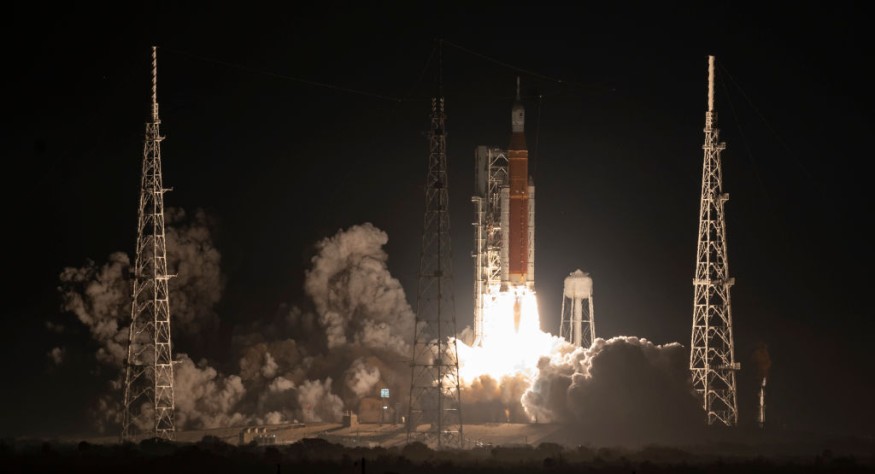The much-awaited and protracted Artemis 1 mission from NASA surpassed all expectations. The Space Launch System (SLS) rocket performed flawlessly. According to the schedule, the space agency reported following the mission's initial evaluation.
Since Tropical Storms and technical issues forced Artemis 1 to postpone its first launches repeatedly, this achievement may be poetic retribution for Artemis 1.

NASA Artemis 1's "Eye-Watering" Launch
In a NASA statement, Artemis mission manager Mike Sarafin said the maiden launch of the Space Launch System rocket was absolutely mouth-watering.
Despite Orion's mission being still in progress, Sarafin points out that they have discovered that the rocket's system performed as intended and predicted.
The first impression is essential since Artemis 1 was dispatched to the moon to be ready for eventual human landings and to establish a permanent presence.
Before the boosters separated, the rocket and spacecraft could travel almost 27 miles from the Kennedy Space Center in Florida and reach a speed of over 4,000 mph in just over two minutes.
The twin solid rocket booster engines, which, according to NASA, produced more than 7 million pounds of thrust during liftoff and met their performance objective, enabled this.
The rocket's avionics and steering thrust vector control systems didn't have any issues either.
The core stage of the rocket and its four RS-25 engines, which burned up its 735,000 gallons of propellants in just over eight minutes, outperformed all predictions before launch and in the final few seconds before liftoff, according to analysis.
Both The Verge and Science Times also reported that the rocket traveled more than any other spacecraft rated for use by humans, arriving at a location 268,563 miles from the planet.
Orion's Accomplishments
Space.com said Orion was launched by the giant Moon rocket at a speed of around 17,500 mph, within about three miles of its target orbital height of 975 by 16 nautical miles, which was well within the anticipated range required for the mission.
According to NASA's study, the rocket's ascent and the software in orbit performed as expected.
The rocket's top stage, the intermediate cryogenic propulsion stage, which executed two burns to boost Orion's orbit, successfully completed the mission.
The upper stage's lone RL-10 engine, which has successfully propelled missions to every planet in the solar system and into interstellar space, set the record for the longest single burn ever throughout its more than 50 years of service.
For Orion to be launched to the moon exactly, it burnt for more than 18 minutes. According to Sarafin, performance was off by less than 0.3%.
In the following months, engineers will do more thorough analyses of the Space Launch System's performance as NASA continues to produce parts for the Artemis 2 rocket and other future rockets.
RELATED ARTICLE : NASA Artemis 1 Shares Stunning Photo of Earth, Moon [LOOK]
Check out more news and information on Space in Science Times.










